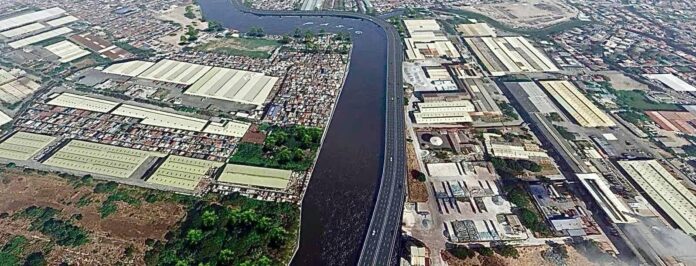
- The 19.37-km Pasig River Expressway (PAREX) officially broke ground on Sept 24
- The P95-billion six-lane elevated expressway will run along the banks of the Pasig River, from Radial Road 10 in Manila to C-6 Road, or the South East Metro Manila Expressway, in Taguig
- It aims to cut travel time between Manila and Rizal province from two hours to only 15 minutes
- The expressway will integrate various modes of transportation beyond cars such as dedicated bike lanes, walkways, a bus rapid transit system
The government and San Miguel Corporation (SMC) officially broke ground on the 19.37-kilometer Pasig River Expressway (PAREX) on September 24.
The P95-billion, six-lane elevated expressway will run along the banks of the river, from Radial Road 10 (R-10) in Manila near the Port Area to C-6 Road, or the South East Metro Manila Expressway, in Taguig.
It aims to cut travel time between Manila and Rizal province from two hours to only 15 minutes.
The groundbreaking took place a few days after the SMC-funded project was approved by the government through the signing of the supplemental toll operations agreement (STOA) on September 21. The STOA was signed by the Department of Transportation, Department of Public Works and Highways, Toll Regulatory Board, Philippine National Construction Corp., and SMC subsidiaries Pasig River Expressway Corp. and Skyway O&M Corp., more than a year since the proposed project was approved as a toll road in June 2020.
PAREX will have three major segments—Segment 1 from R-10 to Plaza Azul, Manila; Segment 2 from Pandacan to C-5, and Segment 3 from C-5 to C-6.
PAREX will also connect to, and utilize a 2.7-km portion of, the new Skyway Stage 3 from Nagtahan to Plaza Azul.
Once operational, PAREX will link the eastern and western cities of Metro Manila and will connect to the Skyway system.
Aside from vehicles, SMC said PAREX will feature a bus rapid transit system, bike lanes, and pedestrian walkways.
SMC president Ramon Ang said the integration of green architecture principles and multiple modes of transportation will make PAREX “a truly inclusive infrastructure project that will benefit pedestrians, motorists, cyclists, and the environment.”
Relatedly, SMC is undertaking a P2-billion, five-year initiative to clean up and rehabilitate the Pasig River to extract some 3 million metric tons of silt and solid waste from the river to improve the flow and carrying capacity of the river and in order to mitigate flooding.
The target is to expand water transport through the use of ferry boats and link cities along the waterfronts of Metro Manila—including Laguna Lake, Pasig River, Manila Bay, and Marikina River, among others.
During the groundbreaking, Ang addressed allegations that the project is bad for the environment, and that it would ruin views of the river.
“This is a private investment. We will spend our own money, so we will not build something that will not be beneficial to the public. We are not the type of people who will build something that will be bad for the public, the environment, and our country, for the sake of profits. In fact, we are investing a lot of money and other resources for these projects, even if the returns will take a while because our country needs them,” Ang said.
He said some sectors appear to be spreading misinformation about the project, claiming, among others that it will cover the Pasig River.
“That is not true. This will be built on the side of the river, along the easement of the Pasig River to be exact. It will not cover the river. The posts for the project will only take up one meter of space, while the average width of the Pasig River is 200 meters,” he explained.
He added that as part of its rehabilitation efforts for the Pasig River, the company will widen and deepen the tributary in critical areas where the river has become too shallow, based on findings of a bathymetric survey conducted by the company.
Ang cited the area at the mouth of Marikina River and Manggahan River as examples, saying the depth of these sections has been reduced to just 1 ½ meters, while the Pandacan and Manila Bay areas are only at two meters. The ideal depth of the river is at least eight meters, he said, to allow for enough floodwaters to flow through.
Even when they start operating the expressway, Ang said they will continue to dredge and clean up the river “because we know that no matter what, garbage will still make their way into the river.”




